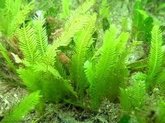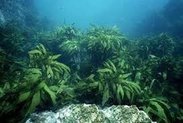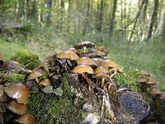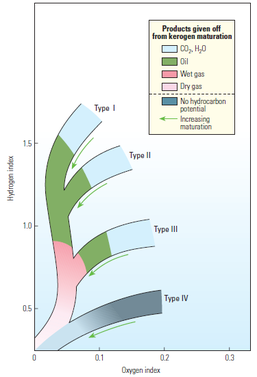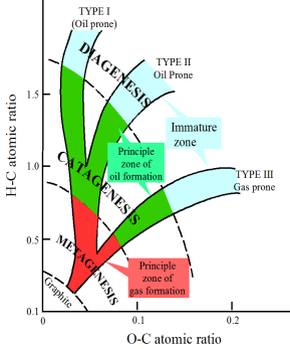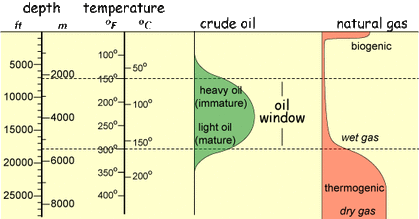What is source rock?In petroleum geology, the term source rock refers to rocks in which hydrocarbons have been generated or are capable of hydrocarbon generation. They are one of the necessary elements of a working petroleum system. They are organic-rich sediments that may have been deposited in a variety of environments: deep water, marine, lacustrine, and deltaic.
When the inorganic materials are in proper temperature and pressure, the organic material become a source rock, sometimes called kerogen. Oil shale can be considered as an organic-rich but immature source rock from which has little oil or none has been generated and expelled. Source rocks are classified from the kerogen type.
How do we classify kerogen types?
|
Author Pooritat Toprasert |
Maturation
Biological Theory of Oil and Gas Formation. The biological theory of oil and gas formation dates back to Georg Agricola in 1556 and later to Mikhail Lomonosov in the 18thcentury. According to this theory, organic material including algae, aquatic microbes, and other sea life, accumulated over time in oxygen-poor enviroment, eventually becoming covered with silt. Over time, as this organic-rich matrix was further buried, it was compressed and heated, eventually undergoing unspecified chemical reactions resulting in crude oil and methane (natural gas). The influence of temperature is important; if the temperature is too cold, the decomposition of the organic matter (called kerogen) will not occur, and if the temperature is too high, the liquid and complex hydrocarbons we call oil will breakdown to methane. The rather narrow range of acceptable temperature is called the oil window and it comprises a temperature range of about 60 to 120 degrees Celsius, corresponding to a depth of about 3 to 6 km. Measurement of maturation
When source rocks were formed, these rocks passed through many processes to release oil and gas. Some rocks can release only heavy oil while some rocks can release both light oil and heavy oil. So how do we know the maturation of these rocks? Vitrinite reflectance (VR) Vitrinite reflectance is a measure of the percentage of incident light reflected from the surface of vitrinite particles in a sedimentary rock. It is referred to as %Ro. Results are often presented as a mean Ro value based on all vitrinite particles measured in an individual sample. At very first, we have to know what vitrinite is , how important it is and how to use it to classify maturation of the source rocks. Vitrinite is the common component of coal and kerogen. Vitrinite is formed from organic material such as plant's cell wall , woody tissue that are a polymer of lignin and cellulose. So vitrinite looks like shiny appearance because of having cell wall composition. So vitrinite reflactance (VR) is a method for identifying the thermal history of sediments in basin. At the first time its utility was used for analyzing maturation of coal bed. Recently, its utility as a tool for the study of sedimentary organic matter metamorphism from kerogens to hydrocarbons has been increasingly exploited. Because of its sensitivity to temperature that largely correspond to those of hydrocarbon generation ( 60 to 120°C) ,so this method is suitable calibration. Vitrinite reflectance can be used as an indicator of maturity in hydrocarbon source rocks. Generally, the onset of oil generation is correlated with a reflectance of 0.5-0.6% and the termination of oil generation with reflectance of 0.85-1.1%. The onset of gas generation ('gas window') is typically associated with values of 1.0-1.3% and terminates around 3.0%. However these generation windows vary between source rocks with different kerogen types. |
References
www.homeaquaria.com
www.countrysideinfo.co.uk
www.hotnhitnews.com
www.fishbio.com
www.studyblue.com
www.homeaquaria.com
www.countrysideinfo.co.uk
www.hotnhitnews.com
www.fishbio.com
www.studyblue.com
